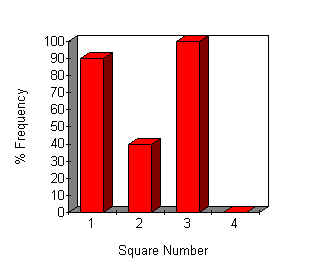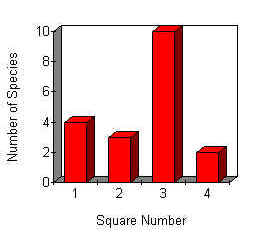| Twelve bryophyte species were found on the project site. This included
11 species of moss and one liverwort, Lepidozia reptans. This represents an
increase of two species over the initial survey.
In the initial survey, mosses formed part of the ground flora in only two of the
representative regions of the project site. These were Area 3 and Area 1. Area 3 had the
highest level of diversity (10 species) because it had already had two years in which to
regenerate after clearance of the Rhododendron cover. Area 1 had two species of moss
colonising flints on the surface of the soil, plus an almost imperceptible amount of a
third species on the soil surface. The flints, peculiar to this area, were thought to be
important in that they raised the mosses above the level of the leaf litter. This would
automatically increase the level of light available to them.
Mosses now form part of the ground flora in all regions of the project site, albeit
mostly in very small quantities (Table 2). The distribution of individual moss species was
very patchy and the quantities present generally very small. It is therefore difficult to
draw any meaningful quantitative comparisons between the results obtained in this survey
and those obtained in the initial survey. This has therefore not been attempted. |

